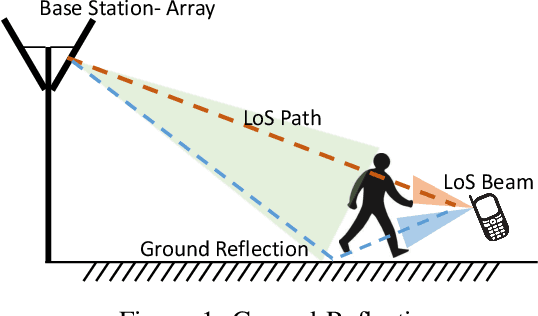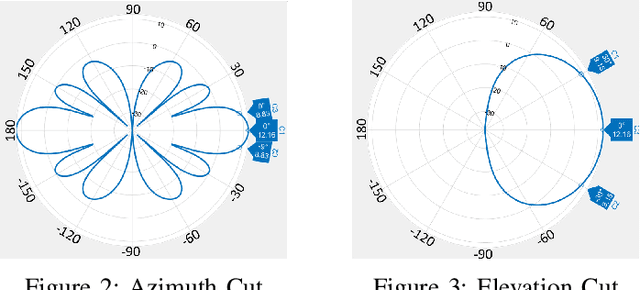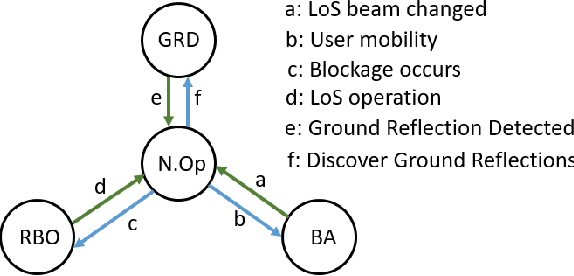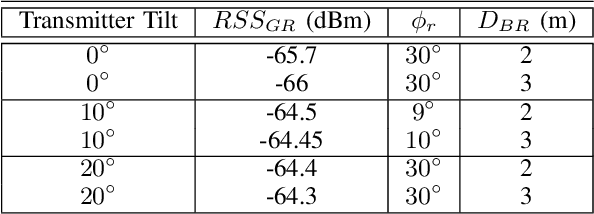Romil Sonigra
TERRA: Beam Management for Outdoor mm-Wave Networks
Jan 10, 2023Abstract:mm-Wave communication systems use narrow directional beams due to the spectrum's characteristic nature: high path and penetration losses. The mobile and the base station primarily employ beams in line of sight (LoS) direction and when needed in non-line of sight direction. Beam management protocol adapts the base station and mobile side beam direction during user mobility and to sustain the link during blockages. To avoid outage in transient pedestrian blockage of the LoS path, the mobile uses reflected or NLoS path available in indoor environments. Reflected paths can sustain time synchronization and maintain connectivity during temporary blockages. In outdoor environments, such reflections may not be available and prior work relied on dense base station deployment or co-ordinated multi-point access to address outage problem. Instead of dense and hence cost-intensive network deployments, we found experimentally that the mobile can capitalize on ground reflection. We developed TERRA protocol to effectively handle mobile side beam direction during transient blockage events. TERRA avoids outage during pedestrian blockages 84.5 $\%$ of the time in outdoor environments on concrete and gravel surfaces. TERRA also enables the mobile to perform a soft handover to a reserve neighbor base station in the event of a permanent blockage, without requiring any side information, unlike the existing works. Evaluations show that TERRA maintains received signal strength close to the optimal solution while keeping track of the neighbor base station.
Overcoming Pedestrian Blockage in mm-Wave Bands using Ground Reflections
Nov 16, 2021



Abstract:mm-Wave communication employs directional beams to overcome high path loss. High data rate communication is typically along line-of-sight (LoS). In outdoor environments, such communication is susceptible to temporary blockage by pedestrians interposed between the transmitter and receiver. It results in outages in which the user is lost, and has to be reacquired as a new user, severely disrupting interactive and high throughput applications. It has been presumed that the solution is to have a densely deployed set of base stations that will allow the mobile to perform a handover to a different non-blocked base station every time a current base station is blocked. This is however a very costly solution for outdoor environments. Through extensive experiments we show that it is possible to exploit a strong ground reflection with a received signal strength (RSS) about 4dB less than the LoS path in outdoor built environments with concrete or gravel surfaces, for beams that are narrow in azimuth but wide in zenith. While such reflected paths cannot support the high data rates of LoS paths, they can support control channel communication, and, importantly, sustain time synchronization between the mobile and the base station. This allows a mobile to quickly recover to the LoS path upon the cessation of the temporary blockage, which typically lasts a few hundred milliseconds. We present a simple in-band protocol that quickly discovers ground reflected radiation and uses it to recover the LoS link when the temporary blockage disappears.
 Add to Chrome
Add to Chrome Add to Firefox
Add to Firefox Add to Edge
Add to Edge